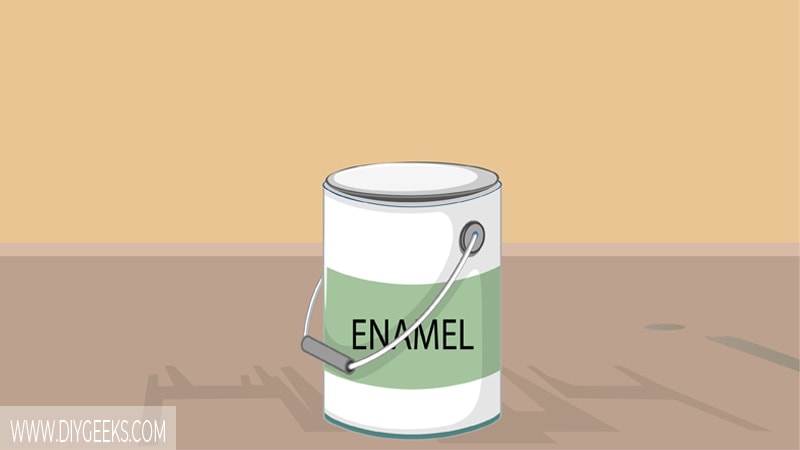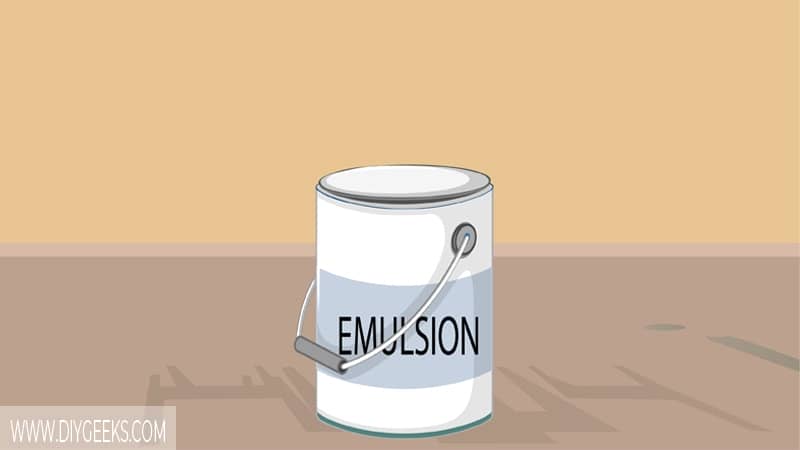Enamel paint is an oil-based paint that creates a glossy moisture-resistant finish. Emulsion paint is a water-based paint that creates a dry matte flexible finish.
Enamel paint is more durable, has better surface adhesion, and protects surfaces better than emulsion paint. Emulsion paint has a faster dry time, requires less preparation, is more flexible, costs less, and covers more surface than enamel paint.
What is Enamel Paint?

Enamel paint is an oil-based paint that creates a glossy moisture-resistant finish that enhances the surface appearance and protects it. There are also water-based enamel paint types.
It creates a durable and tough coating that protects several surfaces from moisture, water, scratches, and other damage.
What is Emulsion Paint?

Emulsion paint is a water-based paint that creates a colorful matte flexible finish that dries fast. The paint is used for interior surfaces as it’s not durable enough to withstand exterior weather elements.
Emulsion paint has a flexible finish that contracts and expands based on temperature changes, preventing the paint from cracking or splitting.
Enamel vs Emulsion Paint
The differences between enamel and emulsion paints are listed below.
Solvent
Enamel paint uses synthetic or natural oil as its solvent, while emulsion paint uses water as its solvent. The difference in solvent makes both paints have different finish types, drying times, and unique features.
Dry Time
Emulsion paint dries faster than enamel paint as its solvent (water) evaporates faster from the coating.
Emulsion paint takes around 2 hours to dry between coats, while oil-based enamel paint takes around 6 hours.
Durability
Enamel paint is more durable and lasts longer than emulsion paint as its glossy finish is more resistant to water and moisture. Emulsion paint has a water-soluble finish that isn’t durable and doesn’t last long if exposed to constant water.
Paint Preparation
Emulsion paint doesn’t require any prep work or thinning before applying it. Most enamel paints require thinning before application.
Surface Adhesion
Enamel paint has better surface adhesion than emulsion paint as it contains more additives, such as alkyd resins, that improve its adhesion.
Interior or Exterior Use
Enamel paint is suited for interior and low-traffic exterior surfaces as its glossy finish that withstand low water amounts. Emulsion paint is suited for interior surfaces only as its finish can’t withstand water exposure.
Both paints must be sealed if applied outdoors.
Primer
Emulsion paints require a water-based primer, while enamel paints require an oil-based primer.
Flexibility
Emulsion paint is more flexible than enamel paint as it’s formulated with extra additives that make its finish expand or contract based on temperature changes.
Paint Cost
Emulsion paint costs less than enamel paint.
Paint Coverage
One enamel paint liter covers around 130 square feet, while one emulsion paint liter covers 160 square feet.
Paint Color
The emulsion paint finish is more colorful as it’s formulated with a higher pigment (colorants) amount. Enamel paint has a colorful finish too, but not as colorful as emulsion.
Which Paint Do You Need?
Before choosing a paint type, consider the following things.
- Exterior or Interior: Use enamel paint for exterior surfaces and emulsion paint for interior surfaces.
- Surface Type: Use emulsion paint for low-traffic interior surfaces, and enamel paint for surfaces exposed to water.
- Budget: Use emulsion paint if you have a lower budget.
[sc name=”enamel-vs-emulsion”]


